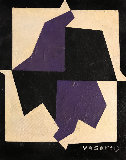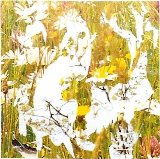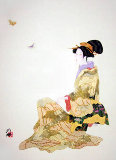

Composition 2
Kumi Sugai
Limited Edition Print : Lithograph
Size : 29.72x22.24 in | 75x56 cm
Edition : From the edition of 150
Motivated Seller Reduced
- 🔥Limited Edition Lithograph $1,700
Hand SignedIn Center At Lower Center, Numbered At Lower Left
Condition Excellent
Not Framed
Purchased fromGallery 1995
Certificate of AuthenticityArt Brokerage
LID133716
Kumi Sugai
Art Brokerage: Kumi Sugai Japanese Artist: b. 1919-1996. Born in 1919, Kobe, Japan, Sugai studied at Osaka University of Art and moved to Paris in 1952. Sugai held hisfirst solo exhibition in 1954. "Moon" is one of his early works in the style typical of Art Informel, in which forms are painted with strong strokes and delicate matiere. From 1960s his work became simple and geometric as Sugai often employed abstract shapes and with vivid primary colors. Sugai exhibited and was awarded prizes in many exhibitions such as Documenta (1959, 1964), Sao Paulo Biennale (1965), Venice Biennale (1968).Sugai lived and worked as painter, sculptor and print maker in Paris from 1952. His work is shown in major museums world-wide.He started print-making in 1952 after which it became a major part of his oeuvre. He produced some 400 prints. His style showed a major change from around 1962 when he adopted 'hard-edge' geometric imagery in contrast to the previous oriental calligraphy- influenced brush like style. Kumi Sugai belonged to the first group of pioneering contemporary Japanese artists to adopt western styles of painting, and to practise them abroad, chiefly in Paris or New York. He studied art at the Osaka School of Fine Arts, were he became acquainted with western painting techniques through the teaching of Yoshihara Haruyoshi. At the same time he practised calligraphy and was fascinated by typography, both of which were to play an important part of his later work. Sugai left for Paris in 1952, where he found Abstract Impressionism was the prevailing mode, the first of many movements he was to encounter and learn from, ranging from Pop and Op to Antiart, Kinetic Art to Minimalism. He began by adapting traditional ukiyoe woodblock techniques to his per- sonal vision of a foreign culture. The forms were contemporary, but the colours had the simplicity and radiant purity of classic masters of the art that enraptured Van Gogh and the Post Impressionists. He also experimented with silk-screen printing and lithography. His first Paris production used graffiti with an unfailing sense of subtle colouring, evoking city scenes, men and animals at the limits of abstraction, with a cer-tain minimalism of snaps suggested by his friend Giacometti. Sugai's career then took off, with one-man shows in Paris and at the Palais des Beaux-Arts in Brussels in 1954, and a first exhibition of his gouaches at the St George's Gallery in London in 1955, during which he received an invitation to exhibit at the Pittsburgh International. Kumi Sugai, painter and printer died May 14, 1996.



























































